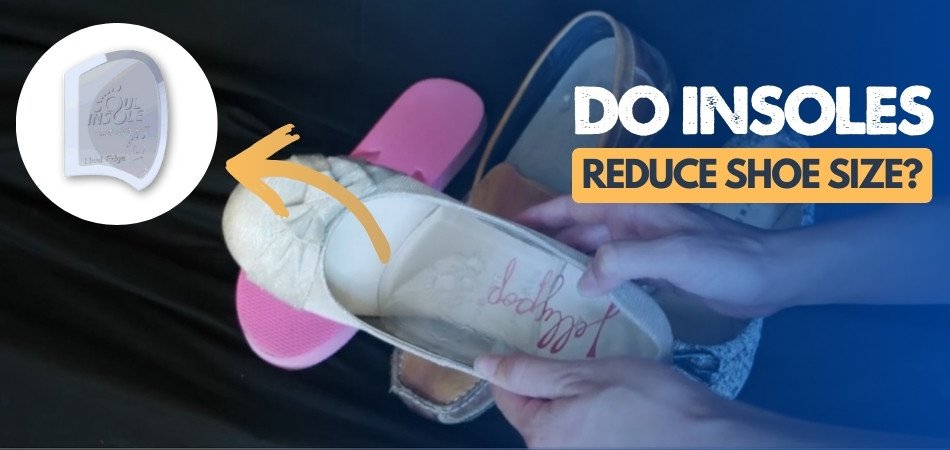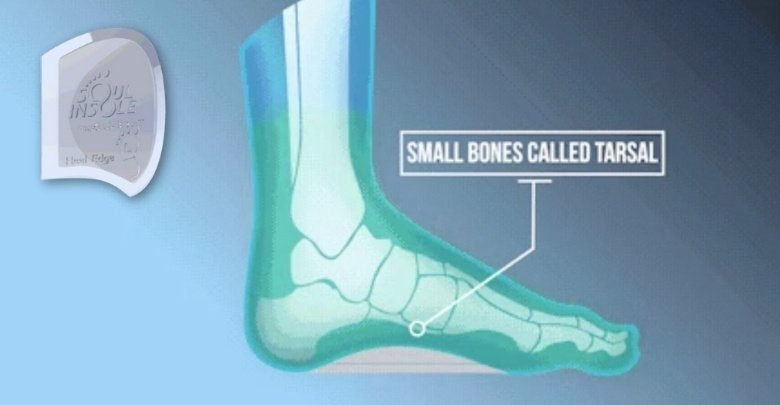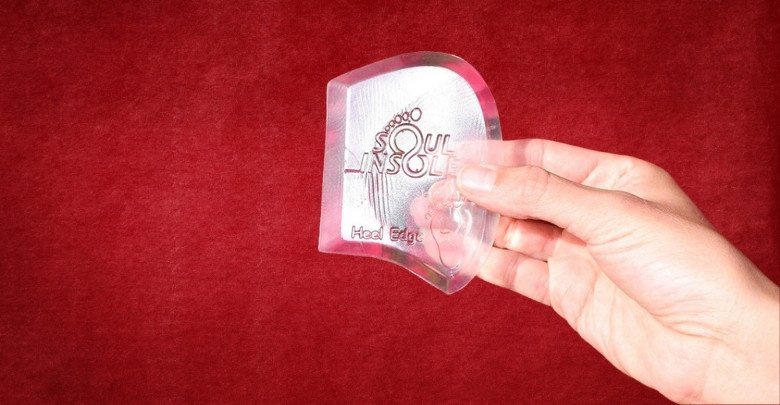Insoles are a popular shoe accessory designed to improve comfort, support, and cushioning. They come in various types, such as orthotic, memory foam, and gel, offering a range of benefits for foot health. However, one common question people have when considering insoles is, “Do insoles reduce shoe size?”
Insoles can slightly reduce the effective space inside a shoe, making it feel tighter or smaller. However, they don’t physically shrink the shoe itself. Instead, they add cushioning or support, which can impact how snugly the shoe fits.
Interested in learning more about how insoles impact shoe size and comfort? You’ll find out when you read on!
Do Insoles Reduce Shoe Size?
Insoles are made to improve your shoe’s comfort by adding extra padding, arch support, or better weight distribution. Many people use them daily to relieve foot pain or correct posture. They can change the feel of your shoes in a good way, making long hours of standing more bearable. But an important question is, do insoles reduce shoe size?
The simple answer is no, insoles do not actually shrink your shoes. However, they can make the inside of your shoes feel tighter and smaller. This is because insoles take up a little bit of space where your foot usually rests. Because of this, your shoes might fit more snugly, sometimes feeling like they are a half-size smaller.

In some cases, insoles can give the feeling that your shoe size has changed. If your shoes were loose before, insoles might help them fit better and feel more secure. But if the shoes were already a tight fit, you might feel discomfort after adding insoles. That’s why it’s a good idea to check your shoe fit after inserting new insoles.
If you are looking to try a more advanced product, soul insole can be a great option for you. Soul Insole offers high-quality insoles that provide excellent arch support without taking up much space in your shoes. They are perfect for people who want extra comfort but still want their shoes to fit nicely. Always choose the right insole to match your comfort and shoe needs!
Why Do People think Insoles Shrink Shoes?
Insoles are often used to improve shoe comfort, but many people mistakenly believe they shrink the size of their shoes. While insoles don’t actually shrink shoes, they can affect the fit in various ways. Here are the reasons why people think insoles shrink shoes:
- Reduction in Available Space: Insoles take up space inside shoes, making the foot area feel smaller. This can create the illusion of a reduced shoe size.
- Tighter Fit: When insoles are added, shoes may feel snugger. This tighter feeling often leads people to believe the shoes have shrunk.
- Shoe Cushioning Changes: Extra cushioning from insoles can make shoes feel less spacious. The foot’s contact with the shoe becomes firmer, affecting the overall fit.
- Different Foot Position: Insoles adjust the position of your feet inside the shoe. This can cause a feeling of tighter or smaller shoes.
- Customizable Fit: Insoles are designed to provide a more personalized fit. This can cause shoes to feel smaller, especially when they weren’t a perfect fit before.
- Material and Thickness: Thicker insoles or those with more padding create a tighter fit. This can mislead some people into thinking their shoes are shrinking.
Who Benefits Most by Using Insoles?
Insoles are a simple tool that can make your shoes feel much better on your feet. They can change the way your shoes fit and how comfortable they feel. Many people use them every day without even thinking much about it. Let’s find out who really gets the most help from using insoles and why you might want to try them too!
People with Foot Pain
If your feet hurt after standing or walking for a while, insoles can help a lot. They add soft support under your feet, making every step feel easier. Insoles can also take pressure off parts of your foot that hurt the most. Many people feel much better just by adding a good insole to their shoes.
Workers on Their Feet
People who stand all day, like in shops or hospitals, really benefit from using insoles. Standing for long hours can make your feet feel tired and sore. A good insole gives extra support, helping you stay comfortable longer. It can also help stop foot pain from becoming a bigger problem.
Runners
If you love running, you know it can be tough on your feet. That’s why insoles for runners are made to give better support and shock absorption. They can also help prevent injuries like sore heels or knees. Many runners find that using insoles makes running feel smoother and more comfortable every day.
People with Flat Feet
Some people have flat feet, meaning they don’t have much of an arch in their feet. This can sometimes cause pain or make walking tiring. Insoles built for flat feet give extra arch support where it’s needed. They help the foot stay in a better shape when walking or standing.
Older Adults
As people get older, their feet can lose strength and natural padding. This makes walking or standing more uncomfortable over time. Insoles can add back some of that lost softness and support. They make it easier for older adults to move around without feeling pain in their feet.
People with Shoe Fit Problems
Sometimes shoes are too loose or don’t feel right, even when they’re the right size. Insoles can fix that by filling extra space and improving the fit. They also help stop your foot from sliding around inside the shoe. This makes walking or running feel much more secure and steady.
Best Way to Use Sole Insoles in Your Shoes
Sole insoles can make your shoes feel much better and give your feet extra support. But to get the best results, you need to use them the right way. Many people just slide them in and hope for the best. Here are some simple ways you can follow to make your insoles work better than ever:

Pick the Right Insoles
Not all insoles are the same, so choose ones that fit your shoes and your needs. Some are made for sports, while others help with foot pain. Always check the size and type before buying. If you want advanced support, Soul Insole is a great choice.
Remove Old Insoles
Before adding new insoles, take out any old ones in your shoes. Leaving old insoles can make the fit too tight. Removing them also helps your new insoles sit flat and work better. This simple step makes a big difference in comfort.
Place Insoles Properly
Slide the insoles into your shoes slowly and make sure they lie flat. Wrinkles or folds can cause discomfort while walking. Press down gently to make sure they stay in place. A good fit helps prevent your feet from sliding around.
Wear Them Gradually
It’s a smart idea to wear your new insoles for a few hours at first. This helps your feet get used to the new support. Increase the time each day until you feel comfortable. Rushing can lead to foot soreness or discomfort.
Check the Fit
Once your insoles are in place, put on your shoes and walk around. Notice if there’s any tightness or discomfort. If the shoes feel too tight, you might need a slightly larger shoe size. Comfort should always be your top priority.
When to Replace Insoles for Better Comfort?
You can keep your feet comfortable and supported with insoles, but they don’t last forever. Over time, even the best insoles can wear out. By replacing them at the right time, you can avoid foot pain. Let’s look at some clear signs that it’s time for a fresh pair:
Worn Out Feel
When your insoles start feeling flat and squishy, they are probably worn out. Good insoles should feel soft but still supportive. If you notice they aren’t giving you the same comfort, it’s time to replace them. Fresh insoles always give better support and cushioning.
Visible Damage
Take a look at your insoles once in a while. If you see cracks, tears, or holes, they are no longer doing their job. Damaged insoles can cause foot pain and make walking uncomfortable. Replacing them keeps your shoes feeling good and your feet happy.
Bad Smell
After using your insoles for a long time, they can start to smell bad. Even washing them might not fix it sometimes. A strong smell is a sign that your insoles have collected too much sweat and bacteria. New insoles can keep your shoes fresh and your feet healthy.
Back Pain and Insoles
Sometimes, bad insoles can cause more than just foot pain. They can also affect your back without you even realizing it. In fact, many people experience problems like back pain linked to insoles that don’t give enough support. If you are feeling strange back pain, it might be time to check your insoles.
Time-Based Replacement
Even if they still look fine, most insoles should be replaced every 6 to 12 months. It depends on how much you use them every day. People who walk a lot might need to replace them sooner. Keeping track of time can help you avoid foot and back problems.
How to Pick Insoles Without Sacrificing Comfort
Picking the right insoles can make a huge difference in how your shoes feel every day. But with so many options out there, it can get a little confusing. You want insoles that give support without making your shoes uncomfortable. Keep reading to find simple tips for finding the perfect insoles!

Know Your Foot Type
Everyone’s feet are different, so it’s important to understand what kind of feet you have. Some people have flat feet, while others have high arches. Picking insoles made for your foot type helps avoid discomfort. It also gives the right support where you need it most.
Choose the Right Size
Insoles come in different sizes, just like shoes do. Always pick insoles that match your shoe size for the best fit. Insoles that are too big or too small can cause rubbing or tightness. A perfect fit means better comfort and support.
Look for Cushioning
Good insoles should feel soft but also firm enough to support your feet. Look for cushioning that feels comfortable when you walk or stand. Memory foam or gel insoles are great choices for extra softness. The right cushioning can make a long day on your feet much easier.
Check the Arch Support
Strong arch support can prevent foot pain and improve comfort. If you have low arches, choose insoles with more support. For high arches, pick ones that offer firm but gentle support. Proper arch support keeps your feet balanced and reduces strain.
Consider Shoe Type
Think about what shoes you’ll use the insoles in. Running shoes, work boots, and dress shoes all need different types of insoles. Some insoles are thin for tight shoes, while others are thicker for sports shoes. Matching insoles to your shoe type gives the best comfort.
Test Before You Commit
If possible, try the insoles before buying or use brands that offer easy returns. Walk around and see how they feel in your shoes. Make sure they don’t cause any pinching or slipping. Testing helps you avoid picking insoles that don’t suit your feet.
Frequently Asked Questions
Insoles can bring up many questions, especially when it comes to how they affect shoe fit and comfort. If you’re curious about other things insoles can do besides what we’ve already discussed, this FAQ section has all the answers. Let’s clear up more doubts and help you make the best choice!
Do Insoles Affect Shoe Width?
Insoles can sometimes affect how wide your shoes feel. If the insoles have extra side padding or arch support, they can reduce the available width. This can make narrow shoes feel even tighter on the sides. Picking slim-profile insoles helps avoid this problem.
Can Insoles Change the Heel Fit?
Yes, adding insoles can slightly change how the heel area fits. Some insoles lift your foot higher inside the shoe. This can reduce heel slippage but might also feel snug or high. Trying different insole thicknesses can help get the right heel fit.
How Often Should I Replace My Insoles?
It’s recommended to replace insoles every 6 to 12 months, depending on how often you use them. Over time, the materials in insoles wear down, losing their cushioning and support. Replacing them regularly ensures your feet continue to receive the proper comfort and support.
What Is the Best Insole for Comfort?
The best insole for comfort depends on your specific needs. Memory foam insoles are great for cushioning, while gel insoles provide excellent shock absorption. Insoles with good arch support are also ideal for improving overall comfort, especially for people with foot problems.
Can Insoles Prevent Blisters?
Yes, insoles can help prevent blisters by reducing friction inside the shoe. Insoles that fit well and provide cushioning prevent your foot from rubbing against the shoe’s inner surface. They also help maintain a better fit, reducing slipping that often causes blisters.
Can Insoles Be Used for Both Shoes and Boots?
Yes, insoles can be used in both shoes and boots. Insoles are versatile and come in a range of sizes and thicknesses to fit different types of footwear. Whether you’re wearing running shoes or work boots, insoles can provide added comfort and support.
Bottom Line
Insoles are a simple yet powerful way to improve comfort, support, and fit in your shoes. They come in different types, offering relief from foot pain, better balance, and even improved posture. Many wonder, “Do insoles reduce shoe size?” While they don’t physically shrink shoes, they can make the fit feel tighter by taking up extra space.
This snug fit may feel like a smaller size, especially if the shoes were already close-fitting. Choosing the right insoles, like Soul Insole, can add comfort without making shoes too tight. Remember to remove old insoles, check the fit, and replace them when they wear out. Properly chosen and maintained insoles keep your feet happy and pain-free every day.






